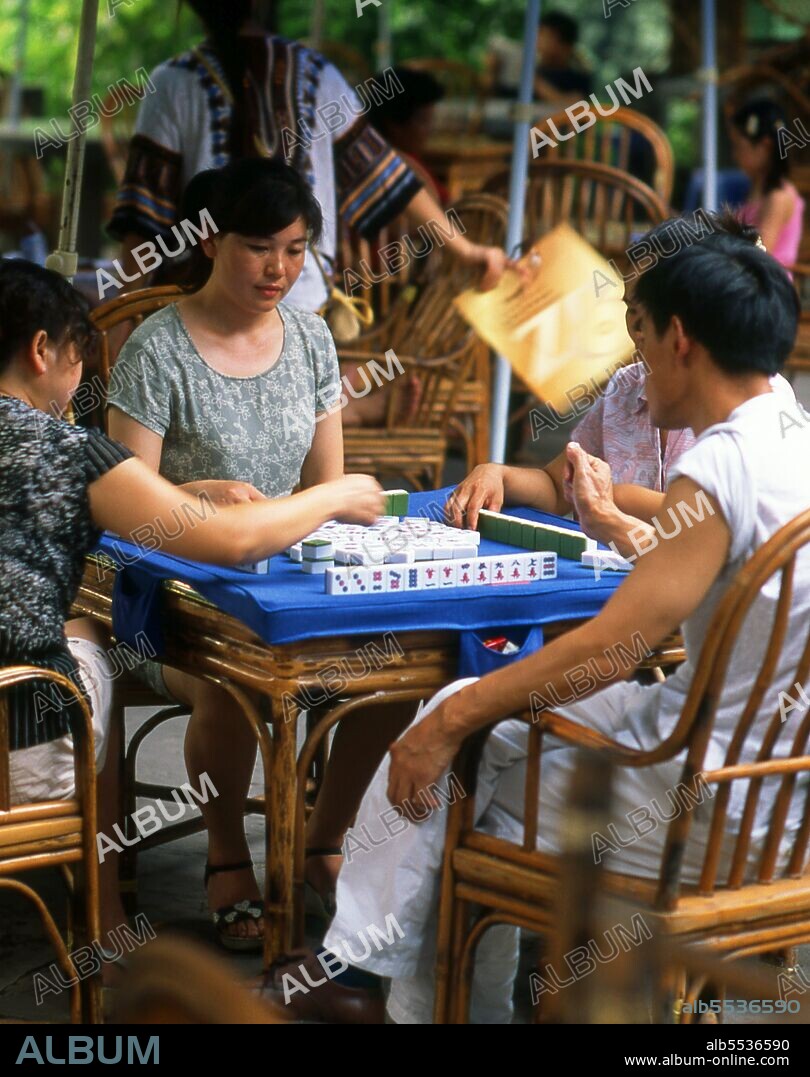alb5536590
China: Mah jong players in a tea house in Renmin Gongyuan (People's Park), Chengdu, Sichuan Province

|
Añadir a otro lightbox |
|
Añadir a otro lightbox |



¿Ya tienes cuenta? Iniciar sesión
¿No tienes cuenta? Regístrate
Compra esta imagen

Título:
China: Mah jong players in a tea house in Renmin Gongyuan (People's Park), Chengdu, Sichuan Province
Descripción:
Ver traducción automática
Mahjong is a game that originated in China, commonly played by four players (with some three-player variations found in Korea and Japan). Similar to the Western card game rummy, mahjong is a game of skill, strategy and calculation and involves a certain degree of chance. In Asia, mahjong is also popularly played as a gambling game (though it may just as easily be played recreationally). The game is played with a set of 136 tiles based on Chinese characters and symbols, although some regional variations use a different number of tiles. In most variations, each player begins by receiving thirteen tiles. In turn players draw and discard tiles until they complete a legal hand using the fourteenth drawn tile to form four groups (melds) and a pair (head). There are fairly standard rules about how a piece is drawn, stolen from another player (melded), the use of basic (numbered tiles) and honours (winds and dragons), the kinds of melds, and the order of dealing and play. However there are many regional variations in the rules; in addition, the scoring system, the minimum hand necessary to win varies significantly based on the local rules being used.
Crédito:
Album / Pictures From History/Universal Images Group
Autorizaciones:
Modelo: No - Propiedad: No
¿Preguntas relacionadas con los derechos?
¿Preguntas relacionadas con los derechos?
Tamaño imagen:
3461 x 4374 px | 43.3 MB
Tamaño impresión:
29.3 x 37.0 cm | 11.5 x 14.6 in (300 dpi)
 Pinterest
Pinterest Twitter
Twitter Facebook
Facebook Copiar enlace
Copiar enlace Email
Email
